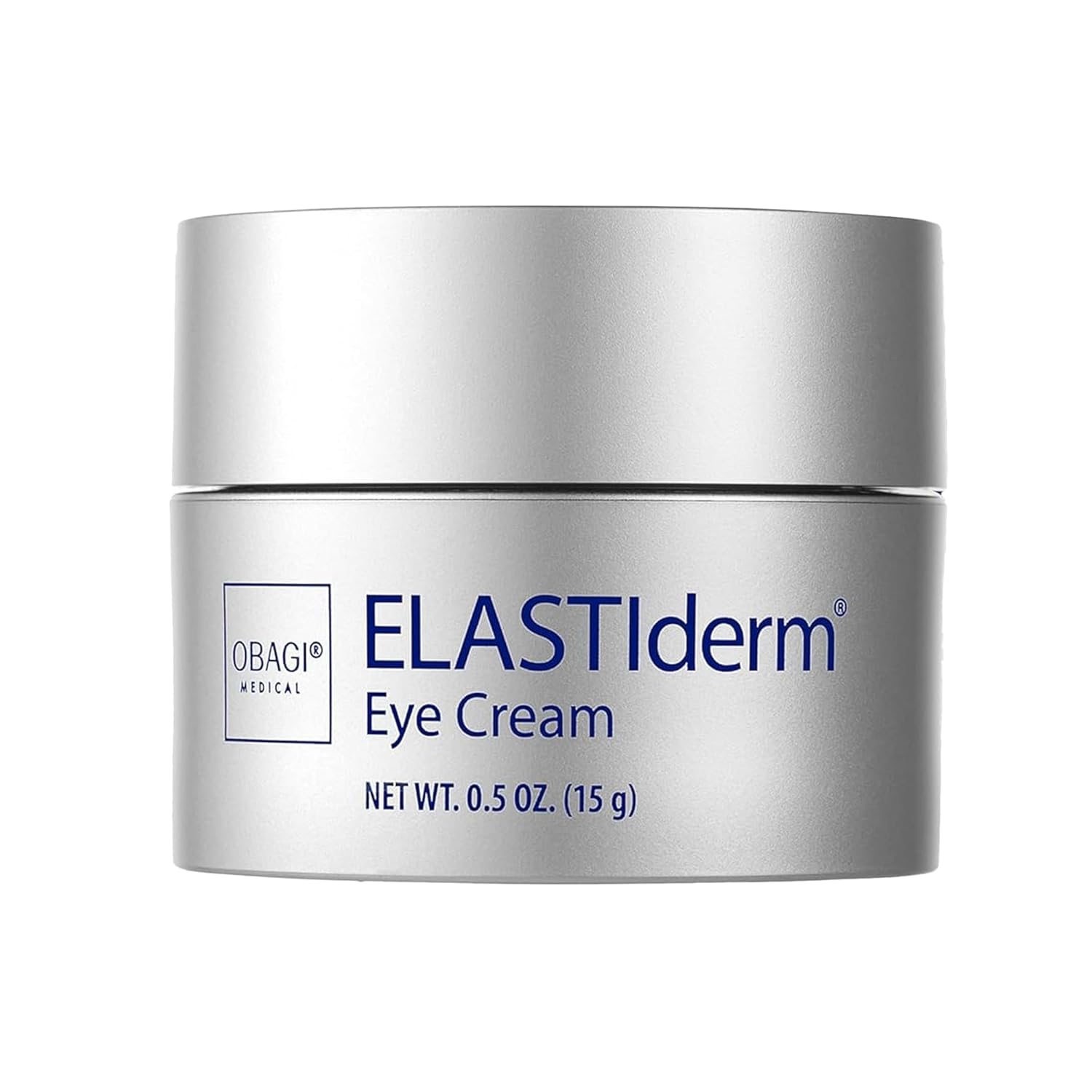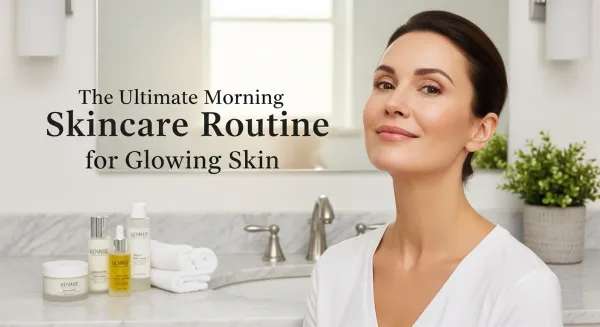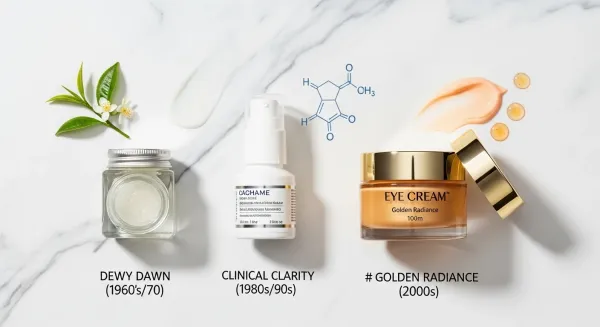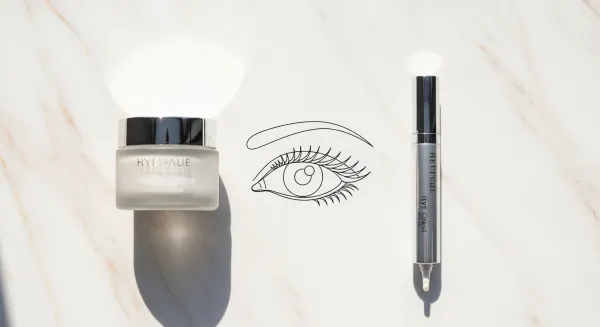The Ultimate Eye Care Guide: Stop Wasting Money on Products That Don't Work
Focuses on the key value proposition: stop wasting money, learn the system, get real results. Includes "science-backed" for credibility.
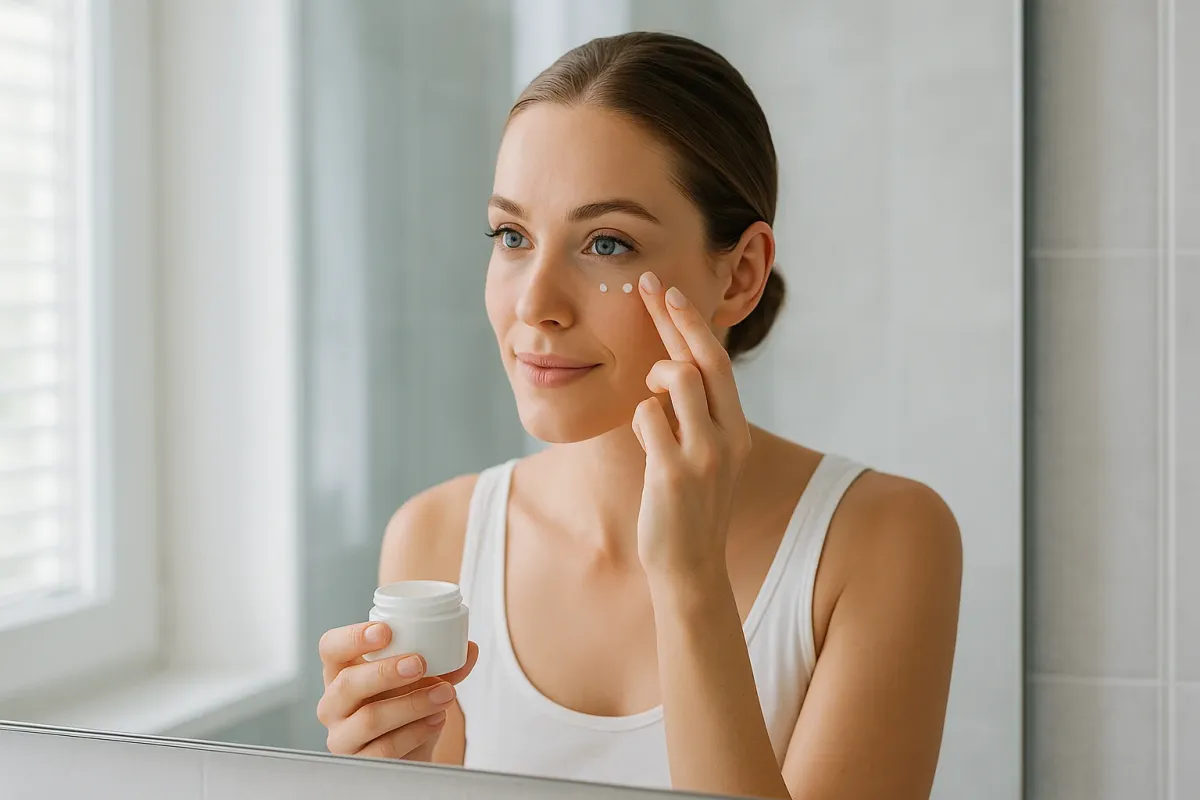
Listen up.
You're spending hundreds—maybe thousands—on eye creams, serums, and treatments. But your eyes still look tired. Still look puffy. Still have those damn dark circles.
Here's why: You're doing it wrong.
Eye Care Guide — Stop Wasting Money on Products That Don’t Work
Quick wins
Stop wasting money — do these instead
- Prioritise sunscreen: Mineral SPF 30–50 around eyes daily. Most “anti‑ageing” fails without photoprotection.
- Use ingredients, not logos: Look for retinoids, peptides, niacinamide, hyaluronic acid, caffeine (puffiness), and ceramides.
- Skip topical collagen & gold: Expensive buzzwords with little penetration benefit vs well‑formulated moisturisers.
- Packaging matters: Choose opaque, airless pumps for retinoids/Vit C. Jars expose actives to light/air.
- Fragrance‑free near eyes: Reduce risk of irritation and watering (which removes product).
- Match problem to product: fine lines → retinoid/peptides puffiness → caffeine + sleep dark circles → pigment/vascular causes.
- Don’t overlayer: Max 2 actives at night to avoid irritation that ages skin faster.
- Use face creams you already like: Eye‑safe moisturisers often perform as well as “eye creams.”
- Trial sizes first: Test 2–4 weeks before committing. Track with before/after photos in identical light.
- Know when to go in‑office: Crow’s feet from movement → neuromodulators; volume loss → filler/energy devices.
Medical information only; not a substitute for professional advice. Patch‑test and stop if irritation occurs.
Not because you're lazy. Not because you bought the wrong product. But because nobody told you the SYSTEM that actually works.
Today, I'm going to show you the exact routine that protects your eyes, reverses damage, and keeps you looking fresh—without wasting money on garbage.
Let's go.
Obagi ELASTIderm Eye Cream – Lightweight, Smooth Formula Clinically Proven to Help Reduce the Appearance of Fine Lines & Wrinkles
The Two-Routine System That Changes Everything
Here's the deal: Your eyes need TWO completely different routines.
Most people use the same cream morning and night. That's like using a winter jacket in summer. Wrong tool for the job.
Morning Routine: Protection Mode
Your morning routine has ONE job: Shield your eyes from the world.
Think about what your eyes face every day:
- UV radiation (even on cloudy days)
- Pollution and dirt
- Blue light from screens
- Stress and fatigue
Here's your morning protocol:
Step 1: Cleanse
- Splash cool or lukewarm water on your eyes
- Use a gentle, sulfate-free cleanser
- This removes overnight crud and reduces puffiness
- Takes 30 seconds
Step 2: Pat Dry
- Use a clean, soft towel
- PAT, don't rub (your eye skin is thinner than tissue paper)
- Rubbing causes wrinkles—period
Step 3: Hydrate (If Needed)
- Got dry eyes in the morning? Use preservative-free lubricating drops
- This is for your EYES, not your skin
- Costs $10 and lasts months
Step 4: Apply Morning Eye Cream Here's where people screw up. Your morning cream needs:
- Lightweight, gel-based formula
- Caffeine (reduces puffiness)
- Vitamin C (brightens dark circles)
- Niacinamide (strengthens skin)
- SPF or light-reflecting particles
Why this matters: Heavy creams in the morning make your makeup slide off and don't protect against environmental damage. You're literally wasting money.
Step 5: Protect From UV
- Wear sunglasses with 100% UVA and UVB protection
- Use SPF 30+ moisturizer around your eyes
- This step prevents 90% of premature aging
Cost: $30-50 total Time: 2 minutes Results: Brighter eyes, less puffiness, protection all day
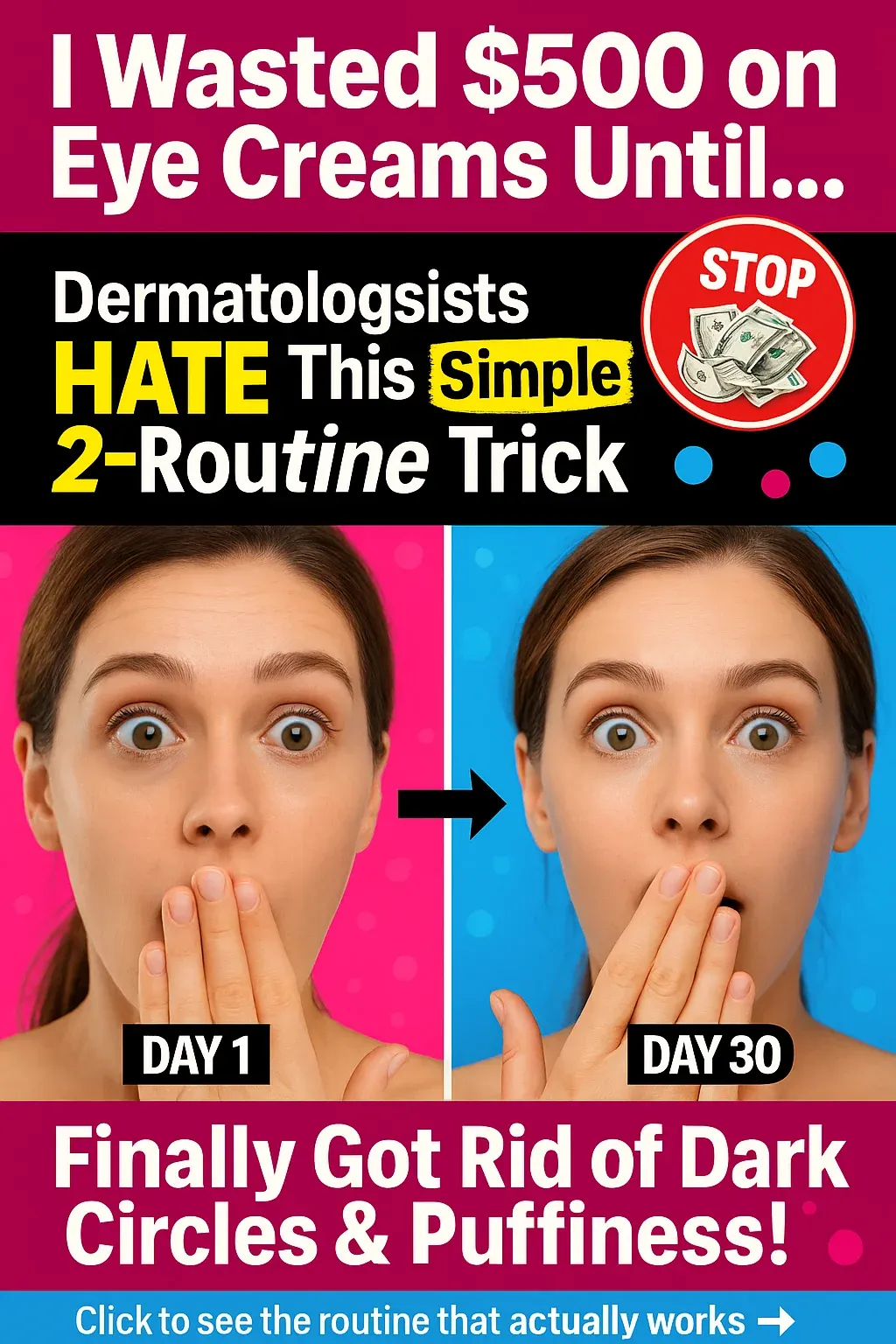
Night Routine: Repair Mode
At night, your body goes into recovery mode. Your skin repairs itself. Cell turnover accelerates.
This is when you bring out the big guns.
Step 1: Double Cleanse
- First pass: Makeup remover (get EVERYTHING off)
- Second pass: Gentle cleanser
- Never sleep with makeup on. It clogs your oil glands and causes infections
Step 2: Warm Compress
- Apply for 5-10 minutes
- Relaxes tired muscles
- Unclogs oil glands
- Promotes healthy tear production
- Use a dedicated eye mask (stays warm longer than a washcloth)
Step 3: Apply Night Eye Cream This is where you invest. Look for:
- Hyaluronic acid (holds 1000x its weight in water)
- Retinol (stimulates collagen, reverses damage)
- Peptides (repairs skin structure)
- Ceramides (strengthens skin barrier)
Rich, heavy creams work here. Your skin absorbs them overnight.
Step 4: Gentle Massage
- Use clean hands
- Circular motions around the eye
- Boosts circulation
- Reduces tension
- Takes 1 minute
Step 5: Cut Blue Light
- No screens 30 minutes before bed
- This prevents eye strain AND helps you sleep
- Better sleep = better skin recovery
Cost: $50-100 for quality night cream Time: 10 minutes Results: Deep hydration, wrinkle repair, long-term anti-aging
The Eye Cream Truth Nobody Tells You
Let me be blunt: You need eye cream twice daily.
Every esthetician agrees on this. Every dermatologist knows this. But the beauty industry doesn't tell you because they'd rather sell you ONE expensive jar that doesn't work.
Here's the science:
- Dry skin wrinkles faster
- Consistent moisture maintains your skin barrier
- Morning products protect; night products repair
- Using the same product twice doesn't give you both
| Time | Purpose | Key Ingredients | Formula Type |
|---|---|---|---|
| Morning | Protection, Hydration, Puffiness Reduction | SPF, Antioxidants, Caffeine, Vitamin C | Lightweight gel |
| Night | Repair, Deep Hydration, Anti-Aging | Retinol, Peptides, Hyaluronic Acid | Rich cream |
Bottom line: One product for $80 that does "everything" actually does nothing. Two targeted products for $50 each WORK.
Stop being cheap. Start being smart.
Fix Common Eye Problems (Without Seeing a Doctor)
Problem #1: Morning Dry Eyes
Wake up with scratchy, dry eyes? Here's why:
Common Causes:
- Your tear production decreases during sleep
- Your eyelids might not fully close (nocturnal lagophthalmos—yeah, it's a thing)
- You wore contacts too long
- Your room is too dry (AC, heating, fans)
- Underlying issues like blepharitis or MGD
Solutions That Actually Work:
- Get a humidifier ($30 on Amazon)
- Apply preservative-free artificial tears before bed
- NEVER sleep in contacts (unless prescribed for overnight wear)
- Clean your eyelids with gentle cleanser
- Use an eye mask to keep eyes closed
Cost: $40-60 total Time to results: 3-7 days
Learn more about proper skincare routines to complement your eye care.
Problem #2: Puffy Eyes
Got bags? Two solutions, depending on the cause.
For Allergies, Crying, or Poor Sleep:
- Use: Cold compress
- How it works: Constricts blood vessels, reduces swelling
- Application: 10-15 minutes, twice daily
- Cost: $15 for reusable gel mask
For Dry Eye, Twitching, Pink Eye, or Styes:
- Use: Warm compress
- How it works: Improves blood flow, opens oil glands
- Temperature: 104°F (like a warm shower)
- Application: 10-15 minutes before bed
- Cost: $20 for microwavable mask
Pro tip: If you need a warm compress daily, see an optometrist. It might signal an underlying condition that needs treatment.
If You Wear Contacts: The 7 Non-Negotiable Rules
Contact lens wearers have 8X higher risk of eye infections if they don't follow protocol.
Here are the 7 rules that prevent 99% of problems:
Rule #1: NEVER Sleep in Lenses
Unless your doctor specifically prescribed overnight wear, take them out. Every. Single. Night.
Why: Your cornea needs oxygen. Lenses block it. Sleeping in them = 8X infection risk.
Rule #2: Wash Your Hands
Before touching lenses:
- Wash with soap and water
- Dry with a clean cloth
- No antibacterial gel (leaves residue)
Rule #3: Keep Water Away
Water contains microorganisms that cause infections.
NEVER:
- Swim with lenses in
- Shower with lenses in
- Rinse lenses with water
- Rinse case with water
Use contact lens solution. Period.
Rule #4: Clean Lenses Properly
- Follow the instructions on your solution bottle
- Daily disposables? Don't reuse them (duh)
- Extended wear? Clean them right
Rule #5: Maintain Your Case
- Rub and rinse with contact lens solution (NOT WATER)
- Dry with clean tissue
- Store upside down with caps off
- Replace every 3 months minimum
Cost: $3 for new case Result: No infections
Rule #6: See Your Eye Doctor
- Attend scheduled exams
- If you have pain, redness, or blurred vision: Remove lenses immediately and call your doctor
- Don't be a hero
Rule #7: Always Have Backup Glasses
Carry glasses with your current prescription. If your eyes get irritated, you can remove lenses without being blind.
Discover how to treat whiteheads if contact lenses cause skin issues around your eyes.
The Lifestyle Factors Nobody Talks About
Your eye care routine is only 40% of the equation. The other 60%? Your daily habits.
Screen Time Management
The 20-20-20 Rule: Every 20 minutes, look at something 20 feet away for 20 seconds.
Why it works: Reduces digital eye strain, prevents fatigue, protects long-term vision.
Real talk: You won't do this perfectly. But even doing it 50% of the time helps.
Nutrition for Vision
Your eyes need specific nutrients. Here's what works:
Top Foods:
- Berries (blueberries, strawberries): Loaded with antioxidants that protect against damage
- Leafy greens (spinach, kale): Contain lutein and zeaxanthin (the eye vitamins)
- Foods with Vitamin A: Carrots, sweet potatoes
- Omega-3 fatty acids: Salmon, walnuts, flaxseed
Check out antioxidant-rich foods that benefit both your skin and eyes.
Breakfast matters: A balanced breakfast sets up your metabolism and eye health for the day.
Learn why sugar sabotages your health including eye health.
Hydration
Dehydration = dry, uncomfortable eyes.
How much water: Take your body weight in pounds, divide by 2, drink that many ounces daily.
180 lbs person = 90 oz water per day
Simple. Effective. Free.
Discover how water intake transforms your skin and eyes.
Sleep
Your eyes recharge during sleep. They repair damage. They recover from stress.
Minimum: 7 hours Optimal: 8 hours
No negotiation here.
Outdoor Time
Natural sunlight regulates your circadian rhythm. This affects:
- Sleep quality
- Eye health
- Overall well-being
Minimum: 15-30 minutes daily outside
Stop Rubbing Your Eyes
Every time you rub your eyes, you:
- Introduce dirt and bacteria
- Cause irritation
- Create micro-tears in delicate skin
- Increase risk of infection
Solution: If your eyes itch, use eye drops. If they're tired, close them. Don't rub.
The Bottom Line
Here's what actually matters:
Morning Routine:
- Cleanse
- Pat dry
- Hydrate (if needed)
- Apply lightweight eye cream with caffeine/Vitamin C
- Protect with SPF 30+ and sunglasses
Night Routine:
- Double cleanse (remove ALL makeup)
- Warm compress (5-10 minutes)
- Apply rich eye cream with retinol/peptides
- Gentle massage
- Cut screen time
Lifestyle:
- Follow 20-20-20 rule for screens
- Eat berries and leafy greens
- Drink enough water
- Get 7-8 hours sleep
- Spend time outdoors
- Don't rub your eyes
Contact Lens Wearers: Follow the 7 rules or pay the price.
Cost:
- Morning cream: $30-50
- Night cream: $50-100
- Sunglasses: $20-200
- Humidifier: $30
- Eye masks: $15-20
- Total: $145-400 one-time
Time:
- Morning: 2 minutes
- Night: 10 minutes
- Total: 12 minutes daily
Results:
- Brighter, more alert eyes
- Reduced dark circles and puffiness
- Prevention of premature aging
- Long-term eye health
- Confidence
The information is here. The system works. The only question is: Will you implement it?
Stop wasting money on random products. Stop hoping things will magically improve.
Start following the system. Today.
Your eyes (and your wallet) will thank you.
Want to take your skincare to the next level? Check out our guide on treating dark circles permanently and learn about eye wrinkle treatments beyond eye cream.
For more evidence-based skincare information, visit the American Academy of Dermatology and the American Optometric Association for professional guidance on eye health.
FAQ — eye care guide
Straight talk. No wasted spend.
Keep it tight: cleanse, moisturize, protect. Use a gentle cleanser, then a light moisturizer. Every morning finish with SPF 30+ and sunglasses that block 100% UVA/UVB. Add vitamin C in the AM and a low-strength retinoid at night if your skin tolerates it. Consistency beats fancy products.
Most adults do well with a comprehensive, dilated exam every 1–2 years. After 60, plan for yearly or every-2-year visits. Go sooner if you notice vision changes, have diabetes, high blood pressure, or a family history of eye disease. Frequency is personal—follow your provider’s guidance.
Not always. A gentle face moisturizer + daily SPF covers most people. If you want targeted help, pick ingredients by goal: caffeine for AM de‑puffing, peptides/hyaluronic acid for hydration, low‑dose retinol at night for smoothing. Stop if it stings or irritates—switch to simpler care.
Different tools. Serums are lighter and fast‑absorbing—good under makeup or for oilier skin. Creams are thicker and occlusive—better for dryness or crepey texture. Pick what matches your skin and when you’ll use it (serum AM, richer cream PM is a solid split).
For routine exams, glasses/contacts, and many eye issues, see an optometrist. For surgery or complex disease, see an ophthalmologist (a medical doctor who also operates). Both can detect problems and refer as needed. Not sure? Start with optometry; they’ll escalate when it’s time.

